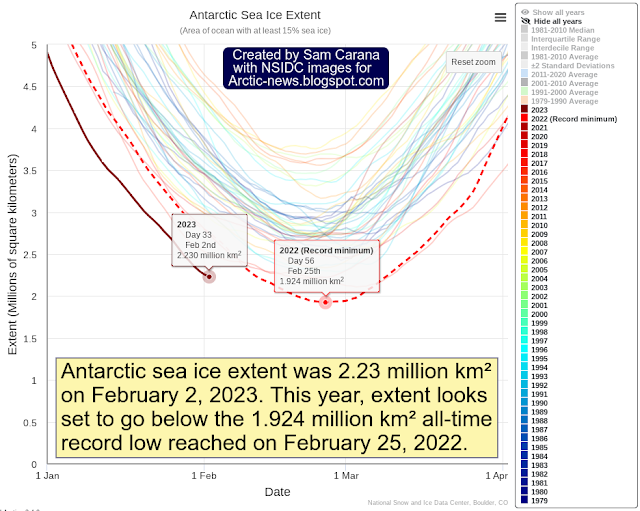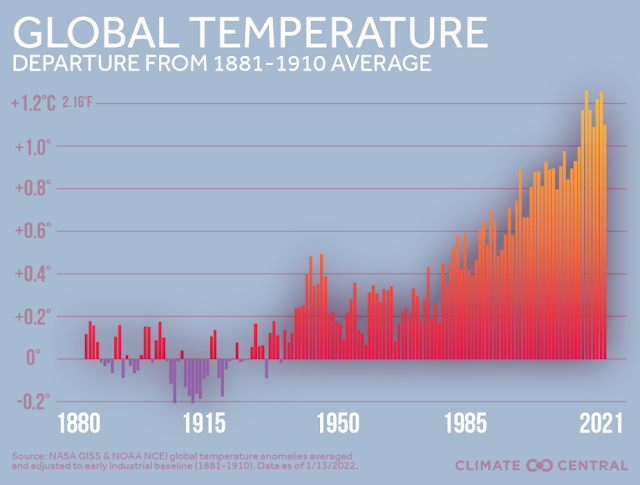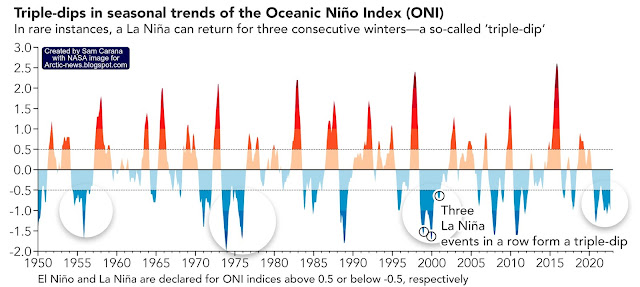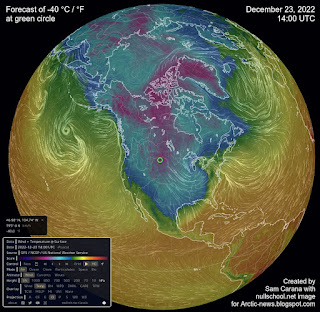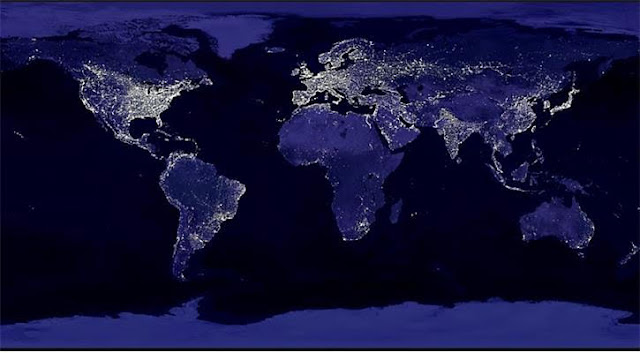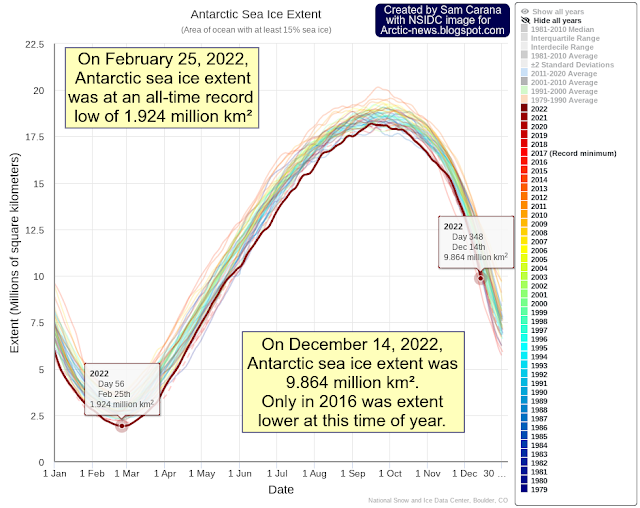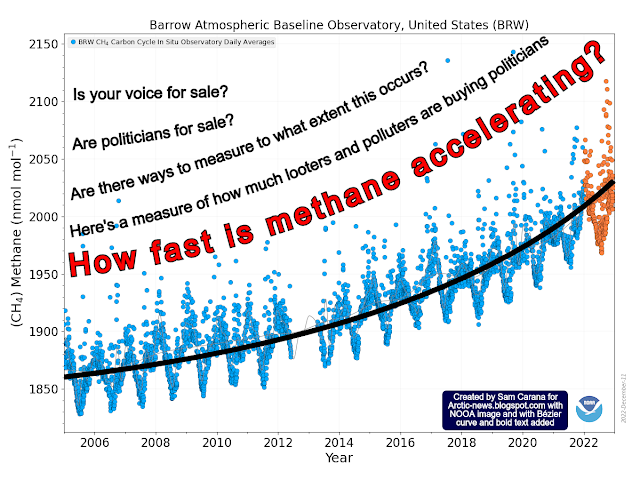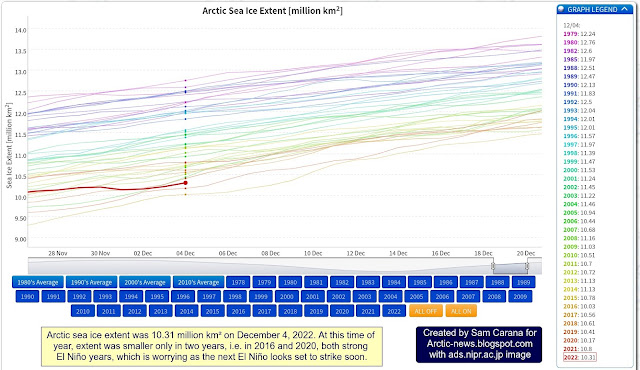Ocean treaty agreed in momentous success after 10 years negotiation
After ten years of discussions, nations have secured a historic agreement to safeguard the world’s seas. The High Seas Treaty intends to conserve and restore marine life by designating 30% of the oceans as protected areas by 2030.
After 38 continuous hours of talks and 10 years of negotiations, the deal was struck on Saturday evening at the United Nations headquarters in New York.
The talks had been stalled for years due to conflicts over finance and fishing rights. The latest international accord on ocean conservation, the UN Convention on the Law of the Sea, was signed 40 years ago in 1982. This agreement established the high seas – international waters in which all countries have the right to fish, ship, and conduct research – however just 1.2% of these waters are protected. Sea species living beyond these protected regions have been under risk from climate change, overfishing and maritime traffic. According to the International Union for Conservation of Nature’s most recent estimate of worldwide marine species, approximately 10% are at risk of extinction (IUCN).
These new protected zones, established by the treaty, will limit the amount of fishing allowed, the routes of shipping channels, and exploratory operations such as deep sea mining, which involves extracting minerals from a sea bottom 200m or deeper below the surface.
Environmental organisations have been concerned that mining methods might damage animal mating areas, produce noise pollution and be harmful for marine life. The International Seabed Authority that handles licencing have stated that “any future activity on the deep […]
Time’s up for the mismanagement of the UK’s most precious resource – our rivers and coastal waters
For years, the UK’s management of its rivers and coastal waters has been deteriorating at a greater pace than we have seen since the Industrial Revolution and has never been fit for purpose. With the pace of deterioration of our water quality accelerating at a truly alarming pace, we need an urgent, coordinated and comprehensive national review, driving prompt action including law changes to force improvements by our water companies, business and agriculture.
In this new series, Save the Planet lays down its manifesto for change – a “carrot and stick” approach of strengthening regulations with punitive penalties for failure, yet actively promoting and rewarding sustainable initiatives for a better future.
There are several pragmatic and effective measures that the UK could take to fix the high levels of contamination and pollution of its rivers and inland coastal waters. These include:
Strengthening regulations: To reduce pollution levels in rivers and inland coastal waters, the UK government must strengthen existing regulations or enact new ones. Setting even stricter limits on pollutant discharge from industrial and agricultural activities, for example.
Increasing monitoring: The government must conduct more extensive monitoring of water quality in rivers and inland coastal waters in order to identify pollution hotspots and take action to address them, including the use of new technologies such as sensors to monitor water quality in real time.
Promoting sustainable agriculture: Agricultural activities are a major source of pollution in rivers and inland coastal waters. The government should increase its promotion of sustainable agriculture practices that reduce fertiliser and pesticide […]
Arun waters amongst the most E. Coli-infested in the UK
According to research, the coastal waters in and surrounding Arun District are among the most E. coli-infested in the UK, with Chichester having some of the worst cases.
The numbers, gathered by SEO experts Reboot Online, collate and compare data on water quality around the UK to provide residents with a thorough understanding of the condition of our coastal waters.
 West Wittering coastal water contaminated by e.coli
West Wittering coastal water contaminated by e.coli
They demonstrate that Chichester has suffered more than other areas since E. coli rates there have reportedly climbed by 568.56%. Rates of intestinal enterococci, a sign of potential faecal matter contamination of water bodies, increased by a comparable amount: 498.18%.
With a score of 97 out of 100, Chichester was one of the regions with the worst water quality degradation. Nonetheless, the numbers show that Chichester has not fared as poorly as some other regions of the country, with a “relatively modest” 25,705 hours of sewage discharge documented, despite widespread worries about sewage discharges.
In most ways, Arun District performed marginally better than Chichester itself, though not significantly. The scenario is somewhat mild compared to what Dorset residents had to deal with, when approximately 32,900 hours’ worth of sewage was discharged over the course of the past year. Even so, the situation regarding the deterioration of Arun’s water quality is significantly less rosy with some of the UK’s most degraded and E. coli-infested coastal waterways.
Water quality in the area received a score of 85.05 […]
Welsh Coastal Areas Named Among UK’s Most Polluted Due to Sewage Contamination
Two Welsh coastal areas have been identified as some of the most highly-polluted spots in the UK due to sewage contamination.
The latest figures illustrate the dismal state of many bodies of water due to contamination from water firms.
Two north Welsh locations have made it into the top ten – Rhyl and Morfa Nefyn – while the Menai Strait has also secured a spot in the top twenty. The Environment Agency and Natural Resources Wales have revealed that sewage was pumped into waterways for 3.4 million hours in only one year, which can be translated to 388 years.
This issue has been brought to light by highlighting that the River Severn, which divides England and Wales, was suffering from severe pollution due to the 28,000 hours of sewage pumped into it by Severn Trent Water over 2,656 times.
Other rivers listed in the top 20 include River Teifi, River Usk, River Wye, River Tawe and and River Taf. 
Welsh Water, also known as Dŵr Cymru, said it was “unsurprising” that Wales had greater numbers of spills than other countries, going on to blame storm overflows and rainfall.
“Welsh Water has monitors on 99% of our storm overflows, more than any other water company, and given Wales also receives more rainfall than England this results in these storm overflows operating more often.
“It is therefore unsurprising that we currently record larger numbers of spills than […]
English Water Companies Oversaw Shocking Levels of Pollution in 2022
According to the UK government’s Environmental Performance Report for 2021, English water companies oversaw shocking levels of pollution in a year where there were 1,677 sewerage incidents, where untreated effluent was released into rivers and coastal waters.
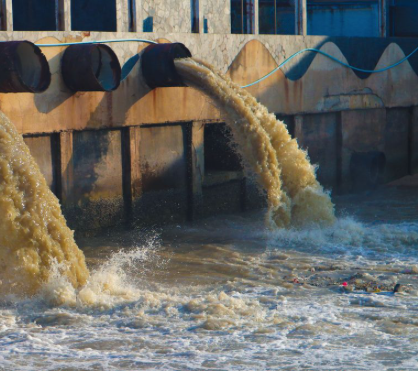
Effluent discharge into a river in the UKThere are nine water and sewerage companies operating in England that provide clean drinking water and waste water services, and the government regulates and works in partnership with them to ensure they meet environmental standards. However, there have been instances of water companies deliberately releasing sewage into rivers and inland waters during heavy rain, which can have a significant impact on the environment. In recent years, there have been several high-profile cases of water companies contaminating rivers and inland waters in this way, leading to fines and legal action.
For example, in 2019, Southern Water was fined a record £126 million for deliberately releasing billions of litres of sewage into the environment over a period of years, resulting in serious harm to the environment and public health. Similarly, in 2021, Thames Water was fined £4 million after pleading guilty to illegally discharging sewage into a river in Buckinghamshire, causing serious harm to the environment.
Evidence from River Action UK indicates that the unprecedented growth of poultry farms in the headwaters of the Wye River is contributing to the river’s deterioration. The organisation reports that there are currently 500 farms in the counties of Shropshire, Herefordshire, […]
Will Steffen: The dilemma of pioneer climate scientists
by Andrew Y GliksonWill Lee Steffen: 25 June 1947 – 29 January 2023The name of Will Lee Steffen will stand tall as a pioneer Earth systems and climate change scientist at our critical time when the life support systems of our planet are increasingly threatened. Along with other pioneer climate scientists over the last ~40 years or so, such as Wallace Broecker, James Hansen, Ralph Keeling, Paul Crutzen, Richard Alley, Stefan Rahmstorf, John Schellenberg, William Ruddiman, John Kutzbach, Guy Calendar, Michael Mann, Kevin Anderson, Andrew Weaver, Eric Rignot, Gavin Schmidt, Katrin Meissner, Kevin Trenberth and other, trying to communicate the scientific message of the greatest peril the planet is facing since at least 55 million years ago. There cannot be a more painful position for scientists than to find themselves compelled to issue severe warnings of the demise of the natural world, civilization, society, family and future generations due to the sharp rise in greenhouse gas concentrations and temperatures originating from emissions from human industry. Yet this is precisely what climate scientists have been called to do, Cassandra-like, based on the physical and observed evidence for the rapid elevation in atmospheric, land and marine temperatures since the end of the 18th century at a rate exceeding geological mass extinction events. Not all scientists have risen-up to the challenge. A small number have become climate change denial advocates, often supported by oil and gas corporations. Many in companies, government, institutions and in some instances even in universities had to subdue or moderate their warnings. Personal attitudes and politics became evident where, in some instances, scientists regarded as “optimists” were favoured by the authorities while other, labelled as “alarmists”, were penalized for their views. Nowadays the so-called “alarmists” are vindicated as extreme weather events are taking over large parts of the world.Will Steffen avoided these pitfalls, sticking to the authentic scientific evidence and the manifest consequences of global warming around the world, yet disappointed by the refusal of many in authority to understand the implications of climate science for future generations, as reported in his communications (The Guardian 6/10/2018): “I think the dominant linear, deterministic framework for assessing climate change is flawed, especially at higher levels of temperature rise. So, yes, model projections using models that don’t include these processes indeed become less useful at higher temperature levels. Or, as my co-author John Schellnhuber says, we are making a big mistake when we think we can “park” the Earth System at any given temperature rise – say 2C – and expect it to stay there … Even at the current level of warming of about 1C above pre-industrial, we may have already crossed a tipping point for one of the feedback processes (Arctic summer sea ice), and we see instabilities in others – permafrost melting, Amazon forest dieback, boreal forest dieback and weakening of land and ocean physiological carbon sinks. And we emphasise that these processes are not linear and often have built-in feedback processes that generate tipping point behaviour. For example, for melting permafrost, the chemical process that decomposes the peat generates heat itself, which leads to further melting and so on.” Will Steffen wrote to me in our correspondence (27/03/2022): “For all practical purposes i.e., timescales that humans can relate to, the levels of climate change we are driving towards now will be with us for thousands of years at least. The PETM (Palaeocene-Eocene thermal maximum) might be an appropriate analogue - a rapid spike in CO₂ concentration and temperature followed by the drawdown of CO₂ over 100,000 to 200,000 years. For all practical purposes, that time for recovery is so long (in human time scales) that it could be considered irreversible. Of course, extinctions are irreversible. So when the twin pressures of climate change and direct human degradation are applied to the biosphere, the resulting mass extinction event, that we have already entered, is of course irreversible.” Will was one of a kind. While he would not let his presentations, expressed in scientifically objective and accurate terms, to be too coloured by optimism or pessimism, the congenial nature of his personality and gentle delivery could not hide the severe implications of his message. Rising above the fray, even his detractors found it difficult to refer to him in terms they commonly use toward other climate scientists. Nowadays in many forums climate scientists are replaced by economists, vested interests, marketing agents, sociologists and politicians, with only a vague idea of the basic laws of physics and the atmosphere. Young generations, represented by Greta Thunberg, will see Will as one of last defenders of their future. A/Professor Andrew Y GliksonEarth and climate scientistThe University of New South Wales.11 February 2023
Dire situation gets even more dire
Sea ice extent is very low at both poles at the moment, and the outlook is that the situation is getting even worse. Around Antarctica, sea ice extent was 2.23 million km² on February 2, 2023. Later in February this year, extent looks set to go below the 1.924 million km² all-time record low reached on February 25, 2022. Arctic sea ice extent was 13.676 km² on February 1 , 2023, the second-lowest extent on record for the time of year, as illustrated by the image below. As the above image indicates, over the next few days Arctic sea ice extent looks set to reach an all-time record low for the time of year.Conditions are direThis means that Antarctic sea ice could reach an all-time record low extent later this month, while at the same time Arctic sea ice could be at a record low extent for the time of year.Furthermore, emissions keep rising, ocean heat and greenhouse gas levels keep rising and extreme weather events are getting ever more extreme. Keep in mind that carbon dioxide reaches its maximum warming some 10 years after emission, so we haven't yet been hit by the full wrath of carbon dixode pollution. Furthermore, an earlier analysis concludes that we have already exceeded the 2°C threshold set at the Paris Agreement in 2015. These dire conditions spell bad news regarding the temperature rise over the coming years. On top of these dire conditions, there are a number of circumstances, feedbacks and further developments that make the outlook even more dire.Circumstances that make the situation even more direFirstly, as illustrated by the image on the right, adapted from NOAA, we're moving into an El Niño.It looks like it's going to be a very strong El Niño, given that we've been in a La Niña for such a long time. Moving from the bottom of a La Niña to the peak of a strong El Niño could make a difference of more than half a degree Celsius, as illustrated by the image below.[ from earlier post, adapted from NOAA ]Secondly, sunspots look set to reach a very high maximum by July 2025, as illustrated by the next two images on the right, adapted from NOAA. Observed values for January 2023 are already well above the maximum values that NOAA predicted to be reached in July 2025. If this trend continues, the rise in sunspots forcing from May 2020 to July 2025 may well make a difference of more than 0.25°C, a recent analysis found. Thirdly, the 2022 Tonga submarine volcano eruption did add a huge amount of water vapor to the atmosphere. Since water vapor is a potent greenhouse gas, this is further contributing to speed up the temperature rise. A 2023 study calculates that the submarine volcano eruption near Tonga in January 2022, as also discussed at facebook, will have a warming effect of 0.12 Watts/m² over the next few years.Feedbacks and developments making things worseThen, there are a multitude of feedbacks and further developments that could strongly deteriorate the situation even further.On top of the water vapor added by the Tonga eruption, there are several feedbacks causing more water vapor to get added to the atmosphere, as discussed at Moistening Atmosphere. Further feedbacks include additional greenhouse gas release such as methane from the seafloor of the Arctic Ocean and methane, carbon dioxide and nitrous oxide from rapidly thawing permafrost on land.Some developments could make things even worse. As discussed in earlier posts such as this one and this one, the upcoming temperature rise on land on the Northern Hemisphere could be so high that it will cause much traffic, transport and industrial activity to grind to a halt, resulting in a reduction in cooling aerosols that are currently masking the full wrath of global warming. Falling away of this aerosol masking effect could cause a huge temperature rise, while there could be an additional temperature rise due to an increase in warming aerosols and gases as a result of more biomass and waste burning and forest fires.A huge temperature rise could therefore unfold soon, causing the clouds tipping point to be crossed that on its own could result in further rise of 8°C. Meanwhile, humans are likely to go extinct with a rise of 3°C, as illustrated by the image below, from an analysis discussed in an earlier post.ConclusionThe dire situation we're in looks set to get even more dire, calling for comprehensive and effective action, as described in the Climate Plan.Links• NSIDC - Chartic interactive sea ice graph https://nsidc.org/arcticseaicenews/charctic-interactive-sea-ice-graph• Climate Reanalyzer - sea ice based on NSIDC index V3https://climatereanalyzer.org/clim/seaice• Extinctionhttps://arctic-news.blogspot.com/p/extinction.html• Pre-industrialhttps://arctic-news.blogspot.com/p/pre-industrial.html• NOAA - Climate Prediction Center - ENSO: Recent Evolution, Current Status and Predictionshttps://www.cpc.ncep.noaa.gov/products/analysis_monitoring/lanina/enso_evolution-status-fcsts-web.pdf• NOAA - Monthly temperature anomalies versus El Niñohttps://www.ncei.noaa.gov/access/monitoring/monthly-report/global/202213/supplemental/page-2• NOAA - Solar cycle progressionhttps://www.swpc.noaa.gov/products/solar-cycle-progression• Sunspotshttps://arctic-news.blogspot.com/p/sunspots.html• Tonga eruption increases chance of temporary surface temperature anomaly above 1.5 °C - by Stuart Jenkins et al. https://www.nature.com/articles/s41558-022-01568-2• Moistening Atmospherehttps://arctic-news.blogspot.com/p/moistening-atmosphere.html• Methane keeps risinghttps://arctic-news.blogspot.com/2022/10/methane-keeps-rising.html• A huge temperature rise threatens to unfold soonhttps://arctic-news.blogspot.com/2023/01/a-huge-temperature-rise-threatens-to-unfold-soon.html• The Clouds Feedback and the Clouds Tipping Pointhttps://arctic-news.blogspot.com/p/clouds-feedback.html• Climate Planhttps://arctic-news.blogspot.com/p/climateplan.html
The global climate change suicide pact
by Andrew GliksonDespite of deceptively-claimed mitigation of greenhouse gas (GHG) emissions in parts of the world, ongoing burning of domestic and exported fossil fuels world-wide continues to change the composition of the atmosphere, enriching it in greenhouse gases by yet another ~2 ppm CO₂ (2022: 418.95 ppm; CH₄: 1915 ppb; N₂0: 337 ppb), reaching levels commensurate with those of the Miocene (23.03 to 5.333 Ma) at rise rates exceeding any in the geological record of the last 66 million years (Glikson, 2020) (Figure 1). Figure 1. Global 1880-2021 annual average temperatures (adapted by UCAR from ClimateCentral).Since 1880 mean global temperatures rose at a rate of 0.08°C per decade, from 1981 by 0.18°C per decade and more when emitted aerosols are accounted for (Hansen et al., in Berwyn, 2022). According to Will Steffen, Australia’s leading climate scientist “there was already a chance we have triggered a global tipping cascade that would take us to a less habitable Hothouse Earth climate, regardless of whether we reduced emissions” (Figure 2).Figure 2. Global mean temperature profile since 200 AD projected to beyond 2000 AD (Will Steffen)Over a brief span of less than two centuries (Figure 1) anthropogenic reversal of the carbon cycle induced the emission of some 1.5 10¹² tonnes of CO₂ and an increased release of 150% more CH₄ from the crust, accumulated in sediments for hundreds of million years through photosynthesis and calcification, as well as from permafrost and oceans. Permeation of the atmosphere and the hydrosphere with the toxic residues of ancient plants and organisms, poisoning the biosphere, is leading to the Sixth mass extinction of species in the history of nature.Following failed attempts to deny climate science, vested business and political interests are proceeding, with the support of many governments, to mine coal, sink oil wells and frack hydrocarbon gas, regardless of the consequences in term of global heating, sea level rise, inundation of islands and coastal zones, collapse of the permafrost, heat waves, floods, ocean acidification, migration of climate zones and dissemination of plastic particles, rendering the future of much of the biosphere uninhabitable.Figure 3. Europe: Maximum extreme temperatures, July 17-23, 2002.The progression of global warming is unlikely to be linear as the flow of cold ice melt water from Greenland and Antarctica glaciers would cool parts of the ocean and in part the continents (Figure 4), leading toward a stadial-type phenomenon, the classic case of which is symbolized by the Younger dryas cool period 12,900 to 11,700 years ago. Figure 4. Projected transient stadial cooling events (Hansen et al., 2016)National and international legal systems appear unable to restrict the saturation of the atmosphere with greenhouse gases, as governments preside over the worst calamity in natural history since the demise of the dinosaurs. Facing heatwaves (Figure 3), fires, floods and sea level rise, those responsible may in part remain oblivious to the magnitude of the consequences, waking up when it is too late.There was a time when leaders fell on their sword when defeated in battle or lose their core beliefs, nowadays most not even resign their privileged positions to resist the existential danger posed to advanced life, including human civilization, preoccupied as nations are with preparations for nuclear wars. It is long past time to declare a global climate and nuclear emergency. Andrew Glikson A/Prof. Andrew Glikson Earth and Paleo-climate scientistSchool of Biological, Earth and Environmental Sciences The University of New South Wales, Kensington NSW 2052 Australia Books:The Asteroid Impact Connection of Planetary Evolutionhttps://www.springer.com/gp/book/9789400763272The Archaean: Geological and Geochemical Windows into the Early Earthhttps://www.springer.com/gp/book/9783319079073Climate, Fire and Human Evolution: The Deep Time Dimensions of the Anthropocenehttps://www.springer.com/gp/book/9783319225111The Plutocene: Blueprints for a Post-Anthropocene Greenhouse Earthhttps://www.springer.com/gp/book/9783319572369Evolution of the Atmosphere, Fire and the Anthropocene Climate Event Horizonhttps://www.springer.com/gp/book/9789400773318From Stars to Brains: Milestones in the Planetary Evolution of Life and Intelligencehttps://www.springer.com/us/book/9783030106027Asteroids Impacts, Crustal Evolution and Related Mineral Systems with Special Reference to Australiahttps://www.springer.com/us/book/9783319745442The Event Horizon: Homo Prometheus and the Climate Catastrophehttps://www.springer.com/gp/book/9783030547332The Fatal Species: From Warlike Primates to Planetary Mass Extinctionhttps://www.springer.com/gp/book/9783030754679
A huge temperature rise threatens to unfold soon
A huge temperature rise threatens to unfold, as the already dire situation threatens to turn catastrophic due to the combined impact of a number of developments and feedbacks. The upcoming El NiñoTemperatures are currently suppressed as we're in the depth of a persistent La Niña event. It is rare for a La Niña event to last as long as the current one does, as illustrated by the NASA image below and discussed in this NASA post. The above image also indicates that a strong El Niño has become more common over the years. The above image was created using data up to September 2022. La Niña has since continued, as illustrated by the NOAA image on the right. NOAA adds that the dashed black line indicates that La Niña is expected to transition to ENSO-neutral during January-March 2023. Chances are that we'll move into the next El Niño in the course of 2023. Moving from the bottom of a La Niña to the peak of a strong El Niño could make a difference of more than half a degree Celsius, as illustrated by the image below.[ image adapted from NOAA, from earlier post ]SunspotsThe upcoming El Niño looks set to coincide with a high number of sunspots. The number of sunspots is forecast to reach a peak in July 2025 and recent numbers are higher than expected, as illustrated by the image on the right, from NOAA. An analysis in an earlier post concludes that the rise in sunspots from May 2020 to July 2025 could make a difference of some 0.15°C. Recent numbers of sunspots have been high. This confirms the study mentioned in the earlier post that warns that the peak of this cycle could rival the top few since records began, which would further increase the difference. Joint impact of El Niño and sunspots In conclusion, the joint impact of a strong El Niño and high sunspots could make a difference of more than 0.65°C. This rise could trigger further developments and feedbacks that altogether could cause a temperature to rise from pre-industrial of as much as 18.44°C by 2026.Further developments and feedbacksA combination of further developments and feedbacks could cause a huge temperature rise. An example of this is the decline of the cryosphere, i.e. the global snow and ice cover.Antarctic sea ice extent is currently at a record low for the time of year, as illustrated by the image on the right. Antarctic sea ice extent reached a record low on February 25, 2022, and Antarctic sea ice extent looks set to get even lower this year. Global sea ice extent is also at a record low for the time of year, as illustrated by the image below, which shows that global sea ice extent was 4.6 million km² on January 2, 2023. The image below is from tropicaltidbits.com and shows a forecast for September 2023 of the 2-meter temperature anomaly in degrees Celsius and based on 1984-2009 model climatology. The anomalies are forecast to be very high for the Arctic Ocean, as well as for the Southern Ocean around Antarctica, which spells bad news for sea ice at both hemispheres. Loss of sea ice results in loss of albedo and loss of the latent heat buffer that - when present - consumes ocean heat as the sea ice melts. These combined losses could result in a large additional temperature rise, while there are further contributors to the temperature rise, such as thawing of terrestrial permafrost and associated changes such as deformation of the Jet Stream and additional ocean heat moving into the Arctic from the Atlantic Ocean and the Pacific Ocean.There are many further developments and feedbacks that could additionally speed up the temperature rise, such as the (currently accelerating) rise of greenhouse gas emissions, falling away of the aerosol masking effect, more biomass being burned for energy and an increase in forest and waste fires. As said, these developments and feedbacks could jointly cause a temperature rise from pre-industrial of as much as 18.44°C by 2026, as discussed at the Extinction page. Keep in mind that humans are likely to go extinct with a rise of 3°C, as illustrated by the image below, from an analysis discussed in an earlier post. The situation is dire and threatens to turn catastrophic soon. The right thing to do now is to help avoid or delay the worst from happening, through action as described in the Climate Plan. Links• NASA - La Niña Times Threehttps://earthobservatory.nasa.gov/images/150691/la-nina-times-three• NOAA Climate Prediction Center - ENSO: Recent Evolution, Current Status and Predictionshttps://www.cpc.ncep.noaa.gov/products/analysis_monitoring/lanina/enso_evolution-status-fcsts-web.pdf• Sunspotshttps://arctic-news.blogspot.com/p/sunspots.html • Cataclysmic Alignmenthttps://arctic-news.blogspot.com/2022/06/cataclysmic-alignment.html• NOAA National Centers for Environmental Information, State of the Climate: Monthly Global Climate Report for October 2022, retrieved November 16, 2022https://www.ncei.noaa.gov/access/monitoring/monthly-report/global/2022010/supplemental/page-4• Tropicaltidbits.comhttps://www.tropicaltidbits.com• Jet Streamhttps://arctic-news.blogspot.com/p/jet-stream.html• Cold freshwater lid on North Atlantichttps://arctic-news.blogspot.com/p/cold-freshwater-lid-on-north-atlantic.html• Pre-industrial https://arctic-news.blogspot.com/p/pre-industrial.html• Invisible ship tracks show large cloud sensitivity to aerosol - by Peter Manhausen et al. https://www.nature.com/articles/s41586-022-05122-0• Extinction https://arctic-news.blogspot.com/p/extinction.html• When will we die? https://arctic-news.blogspot.com/2019/06/when-will-we-die.html• Climate Plan https://arctic-news.blogspot.com/p/climateplan.html
2023 could mark a turning point for the Amazon rainforest
New political leaders in Brazil and Colombia have promised to protect the rainforest, raising hopes of saving the ecosystem from becoming savannah
From the New Scientist, 31 December 2022
By Luke Taylor
The Potaro river running through the Amazon rainforest in Guyana
After four years of runaway deforestation in the Amazon under Brazilian president Jair Bolsonaro, the election of Luiz Inácio Lula da Silva, who takes office on 1 January, could be a decisive turning point.
Lula has pledged to aim for net-zero deforestation – the first Brazilian president to do so. “A standing tree is worth more than thousands of logs,” he said in his victory speech on 31 October. “That is why we will resume the surveillance of the entire Amazon and any illegal activity.”
As well as the restoration of monitoring and surveillance efforts, Lula is proposing several ambitious projects, such as a national climate authority and a sustainable farming scheme. But without a majority in Brazil’s Congress, it is unclear whether he will be able to deliver on these pledges. It will also take time to dislodge the illegal industries that have taken hold in the Amazon, such as gold mining.
Despite the challenges ahead, Lula’s win has […]
Wild Winter Weather
[ posted earlier at facebook ]The image on the right shows a forecast of very low temperatures over North America with a temperature of -40 °C / °F highlighted (green circle at center) for December 23, 2022 14:00 UTC. As the image shows, temperatures over large parts of North America are forecast to be even lower than the temperature at the North Pole. The combination image below illustrates this further, showing temperatures as low as -50.3°C or -58.6°F in Alaska on December 22, 2022 at 17:00 UTC, while at the same time the temperature at the North Pole was -13.6°C or 7.4°F. The Jet StreamThe image below shows the Jet Stream (250 hPa) on December 13, 2022, stretched out vertically and reaching the North Pole as well as the South Pole, while sea surface temperature anomalies are as high as 11°C or 19.7°F from 1981-2011 at the green circle. The Jet Stream used to circumnavigate the globe within a narrow band from West to East (due to the Coriolis Force), and it used to travel at relatively high speed, fuelled by the temperature difference between the tropics and the poles.[ posted earlier at facebook ]As the above image shows, the Pacific Ocean is currently cooler at the tropics and warmer further to the north (compared to 1981-2011), which narrows this temperature difference and in turn makes the Jet Stream wavier. Accordingly, the Jet Stream is going up high into the Arctic before descending deep down over North America. The image on the right shows air pressure at sea level on December 22, 2022. High sea surface temperatures make air rise, lowering air pressure at the surface to levels as low as 973 hPa over the Pacific. Conversely, a more wavy Jet Stream enables cooler air to flow from the Arctic to North America, raising air pressure at the surface to levels as high as 1056 hPa.On December 22, 2022, the Jet Stream reached very high speeds over the Pacific, fuelled by high sea surface temperature anomalies. The image on the right shows the Jet Stream moving over the North Pacific at speeds as high as 437 km/h or 271 mph (with a Wind Power Density of 349.2 kW/m², at the green circle). The Jet Stream then collides with higher air pressure and moves up into the Arctic, and subsequently descends deep down over North America, carrying along cold air from the Arctic. Distortion of the Jet Stream also results in the formation of circular wind patterns that further accelerate the speed of the Jet Stream. The image on the right shows the Jet Stream moving over North America at speeds as high as 366 km/h or 227 mph (green circle). The image also shows high waves in the North Pacific. La Niña / El NiñoThe low sea surface temperature anomalies in the Pacific Ocean are in line with the current La Niña. The fact that such extreme weather events occur while we're in the depth of a persistent La Niña is worrying. The next El Niño could push up temperatures further, which would hit the Arctic most strongly. This would further narrow the difference between temperatures at the Equator and the North Pole, thus making the Jet Stream more wavy, which also enables warm air to move into the Arctic, further accelerating feedbacks in the Arctic.The image below, from NOAA, indicates that the next El Niño is likely to emerge soon. ConclusionThe situation is dire and calls for immediate, comprehensive and effective action as described in the Climate Plan. Links• nullschoolhttps://earth.nullschool.net• Jet Streamhttps://arctic-news.blogspot.com/p/jet-stream.html• Coriolis Forcehttps://en.wikipedia.org/wiki/Coriolis_force• Wind Power Densityhttp://educypedia.karadimov.info/library/Lesson1_windenergycalc.pdf• Extreme Weatherhttps://arctic-news.blogspot.com/p/extreme-weather.html• Feedbacks in the Arctichttps://arctic-news.blogspot.com/p/feedbacks.html• NOAA - Multivariate ENSO Index Version 2 (MEI.v2)https://psl.noaa.gov/enso/mei• Climate Planhttps://arctic-news.blogspot.com/p/climateplan.html
The short lifespan of technological civilizations and the future of Homo sapiens
by Andrew GliksonIn his book ‘Collapse’ (2011) Jared Diamond portrays the fate of societies which Choose to Fail or Succeed. On a larger scale the Fermi’s paradox suggests that advanced technological civilizations may constitute ephemeral entities in the galaxy, destined to collapse over short periods. Such an interpretation of Fermi’s paradox, corroborated by recent terrestrial history, implies that the apparent absence of radio signals from Milky Way planets and beyond may be attributed to an inherently self-destructive nature of civilizations which reached the ability to propagate radio waves, consistent with Carl Sagan’s views. It can be expected therefore that the number of advanced technological societies in the universe will be proportional to their average lifetime, perhaps lasting no more than a few centuries. Inexplicably, the behavior of Homo “sapiens” reveals the reality of Fermi’s paradox, unless humans can wake up in time. Since the onset of the Neolithic about ~10,000 years ago open-ended combustion of wood, coal, oil, methane and gas for production of steam power and electricity (Figure 1), and of uranium to generate nuclear power, constrain the life expectancy of industrial civilizations through proliferation of greenhouse gases, alteration of the chemistry of the atmosphere and proliferation of nuclear, chemical and biological weapons, testifying to the relevance of Fermi’s paradox in the 20-21 centuries.Geological and astronomical studies establish Earth is unique among the terrestrial planets in harboring advanced life forms, including colonial life since as early as ~3.5 billion years ago. Should the fate of Homo sapiens be recorded, history would tell that, while the atmosphere was overheating, oceans acidifying and radioactivity rising, humans never ceased to saturate the atmosphere with greenhouse gases, mine uranium, unleash fatal wars and fire rockets at the planets. All the time indulging in sports games and inundating the airwaves with gratuitous words, false promises, misconstrued assumptions and simple lies ─ betraying their future generations and a multitude of species on the only haven of life known in the solar system. Fig. 1. A combined night lights image of Earth signifying global civilization. NASA In a new paper titled ‘Global warming in the pipeline’, Hansen et al. (2022) state: “glacial-to-interglacial global temperature change implies that fast-feedback equilibrium climate sensitivity is at least ~4°C for doubled CO₂ with likely range 3.5-5.5°C. Greenhouse gas (GHG) climate forcing is 4.1 W/m² larger in 2021 than in 1750, equivalent to 2xCO₂ forcing. Global warming in the pipeline is greater than prior estimates. Eventual global warming due to today's GHG forcing alone -- after slow feedbacks operate -- is about 10°C. Human-made aerosols are a major climate forcing, mainly via their effect on clouds ... A hinge-point in global warming occurred in 1970 as increased GHG warming outpaced aerosol cooling, leading to global warming of 0.18°C per decade.” The inevitable consequence is a shift in the position of the Earth’s climate zones, a decline in the Earth’s albedo (a climatologically significant ~0.5 W/m² decrease over two decades), a rise in greenhouse gases at a geologically unprecedented rate of 2-3 ppm/year), acidification of the oceans (by about 26 percent), receding ice sheets, rising sea levels (~20 cm since 1900), changes in vegetation, forests and soils, a shift in state of the climate and mass extinction, with humans are driving around one million species to extinction. For longer than 50 years few were aware that a rise in atmospheric CO₂ on the scale of ~100 ppm CO₂ at the annual rate of 2 - 3 ppm per year, could lead to the unhabitability of large parts of Earth (The Uninhabitable Earth, by David Wallace-Wells) (Figure 2A). Now we find ourselves surrounded by the consequences ─ hydrocarbon saturation of air and water, runaway global heating, acidification, dissemination of micro-plastics, habitat destruction, radioactive overload, proliferation of chemical weapons ─ In confirmation of the reality of Fermi’s Paradox. But just at the time the world was increasingly overwhelmed by extreme weather events, severe fires and floods, climate scientists were increasingly ignored, replaced by politicians, bureaucrats, economists, strategists and vested interests ignorant of the basic laws of physics and of the principles which control the atmosphere-ocean system. Policies and promises guided by the science have been betrayed and meaningful mitigation and adaptation negated by the opening of new coal mines and gas fields. Cold war strategies violating the United Nation charter were depleting the resources required for mitigation of the looming climate catastrophe. Within a blink of geological eye, at a rate unprecedented since the extinction of the dinosaurs, large regions of Earth were becoming increasingly uninhabitable for a multitude of species, surpassing 350 ppm CO₂ and approaching Miocene (5.3 – 23.0 Ma)-like conditions (Figure 2B). All along humans continued busily developing a veritable doomsday machine near 1300 nuclear warheads-strong threatening release within seconds. Fig. 2. (A) Upper Holocene temperatures. (B). The Middle Miocene long-term continental (brown) and marine (blue) temperature change. Red arrow points to the present (2022) average global temperature of 13.9°C NOAA. That humans are capable of committing the most horrendous crimes upon each other, on other species and on nature, including mass exterminations, has been demonstrated during the 20th century by the Nazi concentration camps and by genocidal conflicts such as in Viet Nam, Cambodia, Laos, Rwanda, Yemen, Iraq, Afghanistan, Bosnia, Ukraine ─ the list goes on … Fig. 3. Tsar Bomba, exploded above Novaya ZemlyaThe ultimate step toward the Fermi’s paradox has been reached following nuclear experiments in New Mexico, Novaya Zemlya (Figure 3), the bombing of Hiroshima and Nagasaki and the rising prospects of a nuclear war, with consequent firestorms, radiation from fallout, a nuclear winter, and electromagnetic pulses looming ever greater. According to a paper by Robock and Toon (2012) ‘Self-assured destruction: The climate impacts of nuclear war’, a thermonuclear war could lead to the end of modern civilization, due to a long-lasting nuclear winter and the destruction of crops. In one model the average temperature of Earth during a nuclear winter, where black smoke from cities and industries rise into the upper stratosphere, lowers global temperatures by 7 – 8° Celsius for several years.As stated by Hansen et al. (2012): “Burning all fossil fuels would create a different planet than the one that humanity knows. The paleoclimate record and ongoing climate change make it clear that the climate system would be pushed beyond tipping points, setting in motion irreversible changes, including ice sheet disintegration with a continually adjusting shoreline, extermination of a substantial fraction of species on the planet, and increasingly devastating regional climate extremes”.A nuclear war in the background of carbon saturated atmosphere can only lead to extreme damage to the life support systems of the planet. The propensity of “sapiens” to genocide and ecocide, are hardly masked by the prevailing Orwellian language of politicians in the absence of meaningful action to avert the demise of the biosphere as we know it. Whereas the ultimate consequences of global heating are likely to occur within a century, including temperature polarities including heat waves and regional cooling of ocean regions by ice melt flow from Antarctica and Greenland ice sheets (Gikson 2019), a nuclear war on the scale of the MAD (Mutual Assured Destruction) can erupt on a time scale of minutes … On July 16, 1945, witnessing the atomic test at the Trinity site, New Mexico, Robert Oppenheimer, the chief nuclear scientist (Figure 4), cited the Hindu scripture of Shiva from the Bhagavad Gita: “Now I am become Death, the destroyer of worlds”. Then, as stated by Albert Einstein: “The splitting of the atom has changed everything, except for man’s way of thinking, and thus we drift into unparalleled catastrophes”.Fig. 4. Robert Oppenheimer and Albert Einstein in 1947Andrew GliksonA/Professor Andrew GliksonEarth and Paleo-climate scientistSchool of Biological, Earth and Environmental SciencesThe University of New South Wales,Kensington NSW 2052 Australia16 December 2022Books:The Asteroid Impact Connection of Planetary Evolutionhttps://www.springer.com/gp/book/9789400763272The Archaean: Geological and Geochemical Windows into the Early Earthhttps://www.springer.com/gp/book/9783319079073Climate, Fire and Human Evolution: The Deep Time Dimensions of the Anthropocenehttps://www.springer.com/gp/book/9783319225111The Plutocene: Blueprints for a Post-Anthropocene Greenhouse Earthhttps://www.springer.com/gp/book/9783319572369Evolution of the Atmosphere, Fire and the Anthropocene Climate Event Horizonhttps://www.springer.com/gp/book/9789400773318From Stars to Brains: Milestones in the Planetary Evolution of Life and Intelligencehttps://www.springer.com/us/book/9783030106027Asteroids Impacts, Crustal Evolution and Related Mineral Systems with Special Reference to Australiahttps://www.springer.com/us/book/9783319745442The Event Horizon: Homo Prometheus and the Climate Catastrophehttps://www.springer.com/gp/book/9783030547332The Fatal Species: From Warlike Primates to Planetary Mass Extinctionhttps://www.springer.com/gp/book/9783030754679
Antarctic sea ice in rapid decline
Earlier this year, on February 25, Antarctic sea ice extent was at an all-time record low of 1.924 million km², as the above image shows. Throughout the year, Antarctic sea ice extent has been low. On December 14, 2022, Antarctic sea ice was merely 9.864 million km² in extent. Only in 2016 was Antarctic sea ice extent lower at that time of year, and - importantly - 2016 was a strong El Niño year. The NOAA image on the right indicates that, while we're still in the depths of a persistent La Niña, the next El Niño looks set to strike soon. Meanwhile, ocean heat content keeps rising due to high levels of greenhouse gases, as illustrated by the image on the right. Rising ocean heat causes sea ice to melt from below, resulting in less sea ice, which in turn means that less sunlight gets reflected back into space and more sunlight gets absorbed as heat in the ocean, making it a self-reinforcing feedback loop that further speeds up sea ice loss. The currently very rapid decline in sea ice concentration around Antarctica is illustrated by the animation of Climate Reanalyzer images on the right, showing Antarctic sea ice on November 16, November 29 and December 15, 2022. In 2012, a research team led by Jemma Wadham studied Antarctica, concluding that an amount of 21,000 Gt or billion tonnes or petagram (1Pg equals 10¹⁵g) of organic carbon is buried beneath the Antarctic Ice Sheet, as discussed in an earlier post. The potential amount of methane hydrate and free methane gas beneath the Antarctic Ice Sheet could be up to 400 billion tonnes. The predicted shallow depth of these potential reserves also makes them more susceptible to climate forcing than other methane hydrate reserves on Earth, describes the news release.“We are sleepwalking into a catastrophe for humanity. We need to take notice right now. It is already happening. This is not a wait-and-see situation anymore," Jemma Wadham said more recently. Ominously, high concentrations of methane have been recorded over Antarctica recently. The image below shows methane as recorded by the Metop-B satellite on November 28, 2022 pm at 399 mb. The situation is dire and the right thing to do now is to help avoid or delay the worst from happening, through action as described in the Climate Plan.Links• NSIDC - Interactive sea ice graphhttps://nsidc.org/arcticseaicenews/charctic-interactive-sea-ice-graph• NOAA - ENSO: Recent Evolution, Current Status and Predictionshttps://www.cpc.ncep.noaa.gov/products/analysis_monitoring/lanina/enso_evolution-status-fcsts-web.pdf• NOAA - ocean heat contenthttps://www.ncei.noaa.gov/access/global-ocean-heat-content/index.html• Climate Reanalyzer sea ice concentrationhttps://climatereanalyzer.org/wx/todays-weather/?var_id=seaice-snowc&ortho=7&wt=1• Potential methane reservoirs beneath Antarctica - Press release University of Bristol (2012) https://www.bristol.ac.uk/news/2012/8742.html• Potential methane reservoirs beneath Antarctica - by Jemma Wadham et al. (2012) https://www.nature.com/articles/nature11374 • A new frontier in climate change science: connections between ice sheets, carbon and food webshttps://cage.uit.no/2021/05/19/a-new-frontier-for-climate-science-the-evidence-for-glaciers-as-methane-producers-has-exploded-in-recent-years• Metop-B satellite readingshttps://www.ospo.noaa.gov/Products/atmosphere/soundings/heap/iasi/iasiproducts.html• Climate Planhttps://arctic-news.blogspot.com/p/climateplan.html
Politicians for sale
Are politicians for sale? How can it be measured whether politicians are for sale and to what extent this occurs? One measure of how much looters and polluters are buying politicians could be this: How fast is methane accelerating? Rise in methane and rise in temperatureThe rise in methane is vitally important, given methane's potential to rapidly push up temperatures. Arguably the most important metric related to climate change is surface temperature on land, as illustrated by the image below from an earlier post. The image was created with a July 16, 2022 screenshot from NASA customized analysis plots and shows that the February 2016 (land only) anomaly from 1886-1915 was 2.94°C or 5.292°F. ExtinctionLand-only anomalies are important. After all, most people live on land, where temperatures are rising even faster than they are rising globally, and humans will likely go extinct with a rise of 3°C above pre-industrial, as illustrated by the image below, from an analysis in earlier post.Note that in the above plot, anomalies are measured versus 1886-1915, which isn't pre-industrial. The image raises questions as to what the temperature rise would look like when using a much earlier base, and how much temperatures could rise over the next few years.What can be done about it?The next question is: What can be done about it? To avoid politicians getting bought by looters and polluters, action on climate change is best implemented locally, with Local People's Courts ensuring that implementation is science-based.ConclusionsThe situation is dire and the right thing to do now is to help avoid or delay the worst from happening, through action as described in the Climate Plan and posts at Arctic-news.blogspot.com Links• Human Extinction by 2025? https://arctic-news.blogspot.com/2022/07/human-extinction-by-2025.html• NASA customized analysis plots https://data.giss.nasa.gov/gistemp/graphs_v4/customize.html• When will we die? https://arctic-news.blogspot.com/2019/06/when-will-we-die.html• Pre-industrial https://arctic-news.blogspot.com/p/pre-industrial.html• Extinction https://arctic-news.blogspot.com/p/extinction.html• Climate Plan https://arctic-news.blogspot.com/p/climateplan.htmldiv >
Arctic Ocean overheating
Arctic sea ice extent was 10.31 million km² on December 4, 2022. At this time of year, extent was smaller only in two years, i.e. in 2016 and 2020, both strong El Niño years. With the next El Niño, Arctic sea ice extent looks set to reach record lows. The NOAA image on the right indicates that, while we're still in the depths of a persistent La Niña, the next El Niño looks set to strike soon.The image below shows high sea surface temperature anomalies near the Bering Strait on December 2, 2022, with a "hot blob" in the North Pacific Ocean where sea surface temperature anomalies are reaching as high as 7°C or 12.6°F from 1981-2011. The Jet Stream is stretched out vertically from pole to pole, enabling hot air to enter the Arctic from the Pacific Ocean and from the Atlantic Ocean. The image below shows a forecast for December 5, 2022, of 2m temperature anomalies versus 1979-2000, with anomalies over the Arctic Ocean near the top end of the scale. The situation is dire and the right thing to do now is to help avoid or delay the worst from happening, through action as described in the Climate Plan. Links• Vishop sea ice extenthttps://ads.nipr.ac.jp/vishop/#/extent• NOAA ENSO: Recent Evolution, Current Status and Predictions https://www.cpc.ncep.noaa.gov/products/analysis_monitoring/lanina/enso_evolution-status-fcsts-web.pdf• nullschool.net https://earth.nullschool.net• Climate Reanalyzizer https://www.tropicaltidbits.com • Climate Plan https://arctic-news.blogspot.com/p/climateplan.html
There is no Carbon Budget
In the above image, the atmosphere is presented as a "bucket" filling with greenhouse gas pollution from fossil fuel use from 1870 to 2020. The image depicts the idea that there is some carbon budget left, before 1.5°C above pre-industrial will be reached. The Global Carbon Project has just issued an update of what it refers to as the Global Carbon Budget. The Global Carbon Project insists that there still is some carbon budget left, even as global fossil fuel C₂O emissions in 2021 were higher than 2020, and are projected to be higher again in 2022 than 2021, as illustrated by the image on the right. Arctic-news has long said that the suggestion of a carbon budget is part of a narrative that polluters seek to spread, i.e. that there was some budget left to be divided among polluters, as if polluters could safely continue to pollute for years to come before thresholds would be reached that could make life uncomfortable, such as a rise of 1.5°C above pre-industrial. For starters, an earlier analysis warns that the 1.5°C threshold may have already been crossed long ago. The situation looks set to soon become even more catastrophic. The upcoming El Niño could make a difference of more than 0.5°C over the next few years. Additionally, there will be a growing impact of sunspots, forecast to peak in July 2025. Arctic-news has long warned about rising temperatures, not only due to high greenhouse gas levels, but also due to a number of events and developments including a rise of up to 1.6°C due to loss of Arctic sea ice and permafrost, and associated changes, a rise of up to 1.9°C due to a decrease in cooling aerosols, and a rise of up to 0.6°C due to an increase in warming aerosols and gases as a result of more biomass and waste burning and forest fires.More recent posts also warn that the rise could cause the clouds tipping point at 1200 ppm CO₂e to be crossed. Accordingly, the total temperature rise could be as high as 18.44°C from pre-industrial by 2026. Keep in mind that humans are likely to go extinct with a rise of 3°C, as discussed in an earlier post. [ image from quotes, text from 2013 post ] So, there is no carbon budget left. There is just a huge amount of carbon to be removed from the atmosphere and oceans, a "debt" that polluters would rather be forgotten or passed on to future generations. This "debt" has been growing since well before the industrial revolution started. Long ago, people should have started to reduce emissions and remove greenhouse gases, as well as take further action to improve the situation, and Arctic-news has long said that comprehensive and effective action must be taken without delay.The situation is dire and the right thing to do now is to help avoid or delay the worst from happening, through action as described in the Climate Plan and at the recent post Transforming Society. Links• Global Carbon Project - Global Carbon Budget 2022https://www.globalcarbonproject.org/carbonbudget/index.html• The upcoming El Nino and further events and developmentshttps://arctic-news.blogspot.com/2022/11/the-upcoming-el-nino-and-further-events-and-developments.html• Arctic Methane Monsterhttps://arctic-news.blogspot.com/2013/09/arctic-methane-monster.html• The Clouds Feedback and the Clouds Tipping Pointhttps://arctic-news.blogspot.com/p/clouds-feedback.htmlMethane levels threaten to skyrockethttps://arctic-news.blogspot.com/2014/09/methane-levels-threaten-to-skyrocket.html• Pre-industrialhttps://arctic-news.blogspot.com/p/pre-industrial.html• Sunspotshttps://arctic-news.blogspot.com/p/sunspots.html• Methane keeps risinghttps://arctic-news.blogspot.com/2022/10/methane-keeps-rising.html• Extinctionhttps://arctic-news.blogspot.com/p/extinction.html• When will we die?https://arctic-news.blogspot.com/2019/06/when-will-we-die.html• Climate Planhttps://arctic-news.blogspot.com/p/climateplan.html• Transforming Societyhttps://arctic-news.blogspot.com/2022/10/transforming-society.html
US rejoins coalition to achieve 1.5C goal at UN climate talks
From The Guardian, 2nd November 2021:
The US has rejoined the High Ambition Coalition at the UN climate talks, the group of developed and developing countries that ensured the 1.5C goal was a key plank of the Paris agreement.
The decision by the world’s biggest economy and second biggest emitter, after China, to return to the High Ambition Coalition group of countries marks a significant boost to attempts to focus the Cop26 summit on limiting temperature rises to 1.5C, the tougher of the two goals of the Paris agreement.
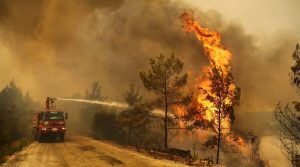 A firefighter extinguishes a forest fire near the town of Manavgat, east of the resort city of Antalya, Turkey
A firefighter extinguishes a forest fire near the town of Manavgat, east of the resort city of Antalya, Turkey
The coalition, which numbered scores of countries at the 2015 Paris talks, will on Tuesday call on governments to step up their efforts on greenhouse gas emissions and phasing out coal, consistent with a 1.5C limit, and urge rich nations to double the amount of climate finance they make available for poor countries to adapt to the impacts of the climate crisis. They also want to bring an end to subsidies for fossil fuels.
A senior US official said: “The High Ambition Coalition was instrumental in Paris in making sure that high ambition was written into the Paris agreementand will […]
Nature’s truly brilliant camouflage
Margaret Neville was amazed by a beautiful creature that she saw during a stroll on her farm in South Africa. It is most remarkable for appearing to be covered in lots of tiny flowers, coloured green and white. Also, it complements these with a number of white or lilac protrusions to make them blend in with surrounding plants – a truly brilliant camouflage. They are small, being approximately 1.5 to 2 inches long and when threatened, will stand upright and spread their wings which reveal two “eyes” to scare off predators.
The Anglophone Dilemma in the Environmental Humanities
By Dan Finch-Race and Katie Ritson Transnational discussions of the climate crisis generally use English as a primary language so as to facilitate direct communication among a high number of stakeholders. Translations into other languages tend to be limited, if available at all. We believe that multilingualism should be an important feature of research into interactions between the human and the more-than-human.
Why Ecocriticism Needs the Social Sciences (and Vice Versa)
By Matthew Schneider-Mayerson, Alexa Weik von Mossner, W.P. Malecki, and Frank Hakemulder it. This is the situation we find ourselves in today. Most environmental scholars, thinkers, and activists agree that to respond to the existential socio-ecological challenges we currently face, we need new narratives of who we are, how we are entangled with the rest of the natural world, and how we might think, feel, and act to preserve a stable biosphere and a livable future. But what kinds of stories should we tell? To which audiences? Are some stories more impactful than others? Might some even be counterproductive?
The Great Blasket Island, Storytelling, and the Environment
By Matthias Egeler and Anna Pilz We are standing on the headland of Dunmore Head on the western edge of Dingle Peninsula, on the western edge of Ireland, on the western edge of Europe. One moment, the slope is speckled with light, the next it is in the shadow of a heavy rain cloud. Then the winds push away the rain leaving behind a sparkling rainbow that disappears after five minutes.
Celebrating Earth Day 2021 !
The theme for Earth Day 2021 is ‘Restore Our Earth’, urging everyone to focus on how we can both reduce our impact on the planet and actively repair ecosystems.
EARTHDAY.ORG™ works in countries around the world to drive meaningful action for our planet across:
-
Food & Environment: Simply put, the event’s organisers want you to combat climate change by changing your diet – better known as reducing your “foodprint.” While we should all be working to reduce our foodprints, there are several factors to consider, such as access, availability, health, and sustainability.
- Climate Literacy: Climate and environmental awareness, when combined with civic education, is expected to create jobs, develop a green consumer market, and enable people to meaningfully engage with their governments in the fight against climate change, according to Earth Day organisers. They believe that climate and environmental education should be mandatory, measured, and include a strong civic participation aspect in every school around the world.
-
The Canopy Project: By planting trees all over the world, this initiative aims to enhance our common climate. Since 2010, Earth Day organisers have worked with global partners to plant tens of millions of trees with The Canopy Project, reforesting areas in desperate need of rehabilitation.
-
The Great Global Clean Up: Did you know that unregulated burning of household waste causes 270,000 premature deaths per year, and that 2 billion people lack access to waste collection services? It’s also reported that 79 percent of all […]

